From the Field
November 24: Gavin Bieber from his just concluded tour of Panama
I just wrapped up a great week at Panama's Canopy Tower. It is always a pleasure to return to this fantastic and unique lodge, surrounded by an excellent mix of habitats and a great diversity of birds. We enjoyed remarkably comfortable and dry weather over the week, with a truly memorable sunrise over the tower one morning. Some of the highlights would have to include our close views of Black-breasted Puffbird and Double-toothed Kite from the top of the tower, almost tame White-necked Jacobins (among 20 other species of hummingbirds for the trip), a gorgeous array of gaudy tanagers and honeycreepers, and 20 species of mammals including this inquisitive White-faced Capuchin. One could easily add to that the wonderful antswarm on Pipeline Road with its attendant antbirds, a perched Slaty-backed Forest-Falcon and Panama's third record of Long-tailed Jaegar. It was quite a stupendous week!
Now I'm heading to the Darien Foothills to scout for our new upcoming March trip to the Canopy Camp!
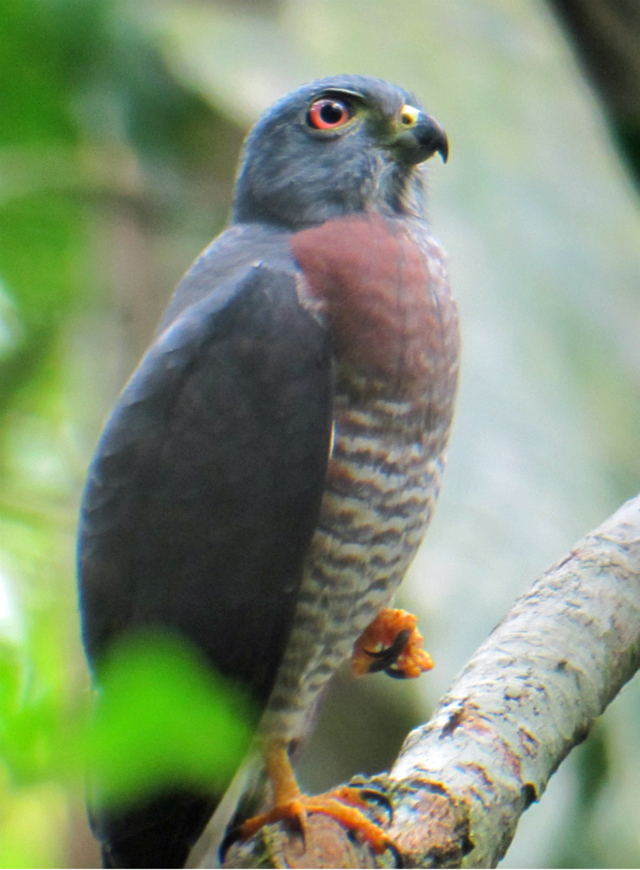
Double-toothed Kite
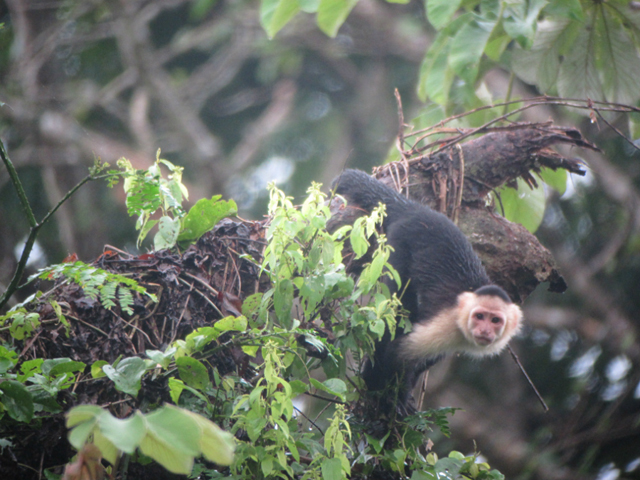
White-faced Capuchin
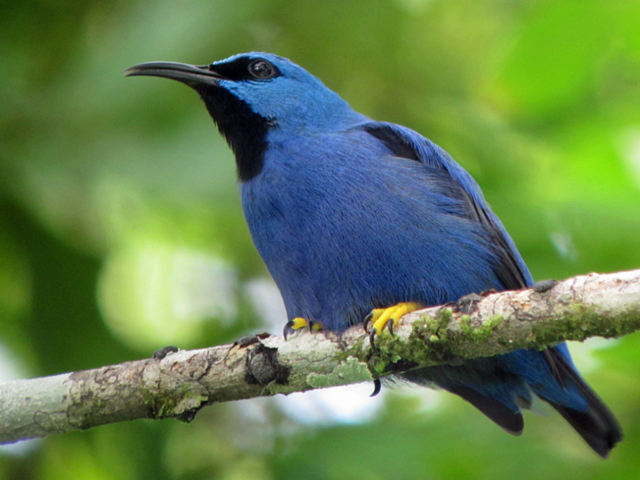
Shining Honeycreeper
November 9: Steve Howell and Fabrice Schmitt from their on-going tour of Chile
From Steve: Even in my 20th year of leading tours here there’s always the unexpected in this amazing country – this year it was the very rare and local Hooded Grebe.
.
Hooded Grebe
It was difficult to leave the grebe, but a fly-by pair of Spectacled Ducks finally pulled us away. Other highlights have included the mind-warping sight of a skein of Chilean Flamingos flying over King Penguins along the Straits of Magellan,

Chilean Flamingos over....

King Penguins
Chocolate-vented Tyrants during our picnic lunch on the Patagonian steppe, and diverse shorebirds, from South American Painted-snipe to Magellanic Plover. Moving on to the scenic Lake District, incredible weather and marvelous birds made for a memorable two days. We started out seeking the handsome Yellow-bridled Finch in a volcanic crater

Seeking Yellow-bridled Finch...

...and finding same.
and ended by watching a pair of Magellanic Woodpeckers for 30 minutes

the watchers....

...and the watched.
until we had to drag ourselves away for a great dinner and some equally memorable pisco sours to celebrate! And now on to central Chile…
From Fabrice: Giant country, giant birds!! A few days ago we were birding the magic Nothofagus forest, home of the giant Magellanic Woodpecker, largest woodpecker in South America. We are now in Central Chile and just did our usual pelagic in the Humboldt current where the giant of the day was the impressive Royal Albatross,

Royal Albatross
along with De Filippi’s Petrel, Peruvian Diving-petrel, and thousands of Sooty Shearwaters. In the Chilean matorral scrub, we also had several encounters with the largest hummingbird in the world, the well named Giant Hummingbird: one mobbing a pygmy-owl (when hummingbirds are larger than the pygmy-owl!!) and a few others on their nests (just seems that the nest doesn’t fit the bird!!).


Belligerent and peaceful Giant Hummingbirds
And today, to complete the list of the “giants” found in Chile, we had wonderful views of the iconic Andean Condor sailing together with a few Black Vultures, just to compare size of these two relatives!!

November 3: David Fisher on his just concluded Queensland and New South Wales Australia tour
The last few days of the 2013 Australia tour, spent around Sydney, produced some great birds. A female Powerful Owl with two well grown chicks (see below) in Sydney's famous Royal National Park proved very popular, while two Superb Lyrebirds there completed the set, as the group had seen Albert's Lyrebird well a couple of days earlier at O'Reilly's. The pelagic off Sydney was amazing with hundreds of birds following the boat from the moment we left the harbour. A large flock of Short-tailed Shearatwaters chased behind us with a dozen or more albatrosses of three species mixed in--including Wandering, White-capped and Black-browed (see below). Further out, all three skuas harried the throng, while Great-winged Petrels and Wilson's Storm-petrels danced around the boat and three species of dolphin broke the waves. And our trip total just topped 400 species.
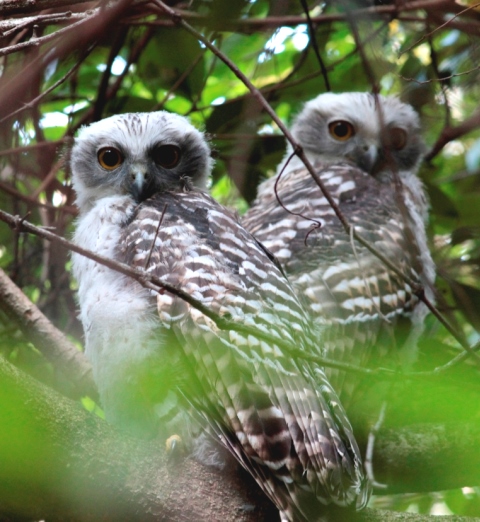
Powerful Owl juveniles
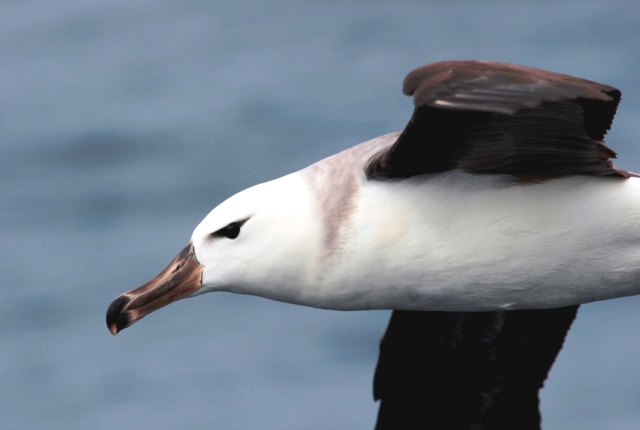
Black-browed albatross
November 2: Rich Hoyer on his just-completed tour of Southeastern Peru
Southeastern Peru might have been a bit rainier than we would have preferred this year (as has been much of southern South America these past few months), but we were prepared and made the most out of it, and many very fine bird and wildlife experiences combined with a truly superb group of participants making it hard to say goodbye. We had unforgettable views of Grass-green Tanager on our full morning in the highest cloud forest,

Grass-green Tanager
along with Golden-collared Tanager, Andean Guans, and Puna Thistletail. Hummers were spectacular this year, with two Wire-crested Thorntails at Cock of the Rock Lodge, at least five Rufous-crested Coquettes at Amazonia Lodge,

Rufous-crested Coquette
a good show of several hermit species virtually everywhere, and at least four Festive Coquettes at Manu Wildlife Center, one of which was an adult male about ready to attack a young male perched above it.

Festive Coquette ready to attack
The boat rides on the rivers and lakes were always interesting (especially with the high water one day), and none of us will ever forget the close encounter we had with a group of roosting Sand-colored Nighthawks.

Sand-colored Nighthawks
We had a great morning with ninety-eight Red-and-green Macaws at the Blanquillo clay lick – the photo below only shows a close-up of the core group.

Red-and-green Macaws
Finally, it was an enchanting morning at Machu Picchu, with swirling fog hiding and then revealing the magical ruins while Inca Wrens and a fantastic White-rumped Hawk alone were worth the steep climb up the steps.

October 31: Stuart Elsom from his ongoing tour to the Gambia
Our first few days have produced wonderful views of many stunning and sometimes difficult to see species. Heading into Brufrut Woods on our first morning the first bird we put the scope on was a brilliant male Klaas’s Cuckoo, this was followed shortly afterwards by a superb male Violet-backed Starling; in itself a rare bird for Gambia this time of year.
This theme continued at Abuko and our luck was clearly ‘in’ as we enjoyed extended views of male and female Giant Kingfisher (male below) only a few metres away from the diminutive Malachite, a male Western Bluebill at close range, several Palmnut Vultures, beautifully iridescent Violet Turacos and finally a Hamerkop gliding back and forth with huge collections of nesting material, some so large that the birds hammer-shaped head was completely obscured!
One of the treats of visiting Gambia in autumn is the opportunity to see the bishops and whydahs in their full breeding dress. The male Northern Red Bishop (below) is particularly stunning with his rather flamboyant ‘fluorescent’ orange and glossy black plumage and was one such example of this quite spectacular family. The next few days will see us head upriver as we search for bustards, sandgrouse, bee-eaters, rollers, wood-hoopoes and that quintessentially Gambian bird - the Egyptian Plover!
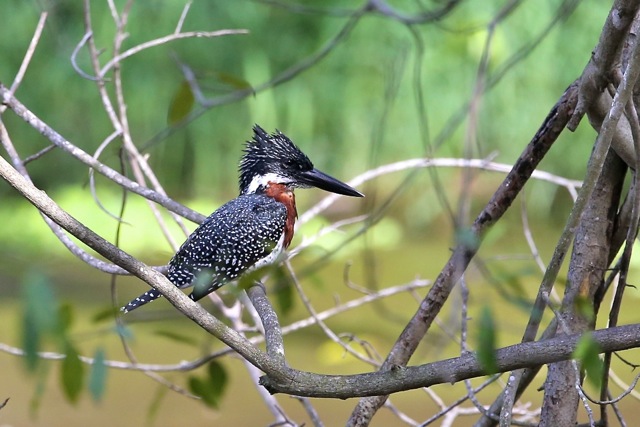

October 27: David Fisher from his just concluded South Australia and Northern Territory tour
Chestnut Rail (below) is one of the hardest species to see in Australia, so I couldn't believe what happened at Buffalo Creek during this year's Australia tour! When we arrived to scan the mangroves on the far shore of the creek in the hope of a glimpse of the rail, there was a bird on the close shore walking quietly along the water's edge. It climbed up into the magrove tree that the group normally stands beside for shade and sat quietly for all to see down to just a few feet in range. It remained there for over an hour, falling asleep from time to time. An unbelievable encounter with a normally very hard to see bird! A lovely way to end this middle segment of our Australia tours, too. And now we head east to Queensland and New South Wales...
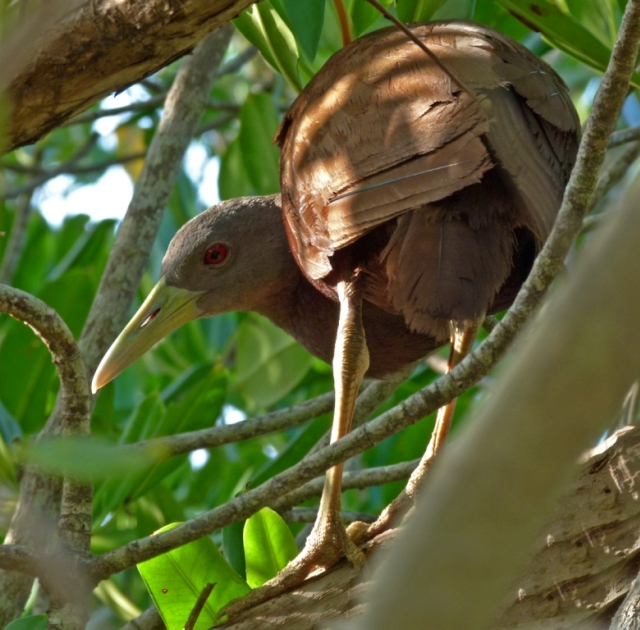
Chestnut Rail
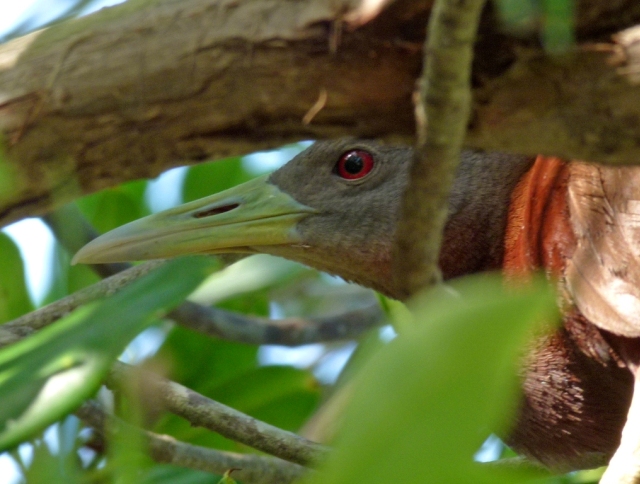
October 18: David Fisher from his ongoing South Australia and Northern Territory tour
We have just arrived in Darwin to higher than usual temperatures, but the birds are as abundent as ever. Yesterday we saw no less than 28 species of wader (some in the morning at Alice Sewage ponds before we departed the Red Centre) and the rest in the afternoon around Darwin. Highlights included Alice's first ever Sanderling, and some superb Oriental Plovers. Earlier near Alice we had wonderful encounters with the often hard-to-find Spinifex Pigeon (below). Wild Budgies were as popular as ever, while at Gluepot in South Australia Striated Grasswren (also below) took pride of place.
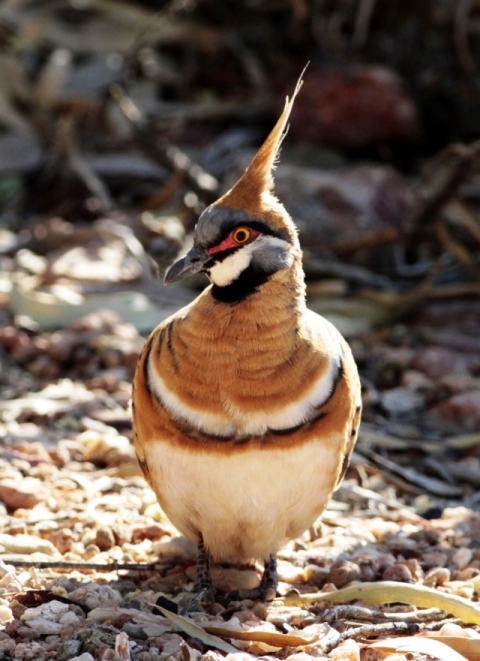
Spinifex Pigeon photo: David Fisher
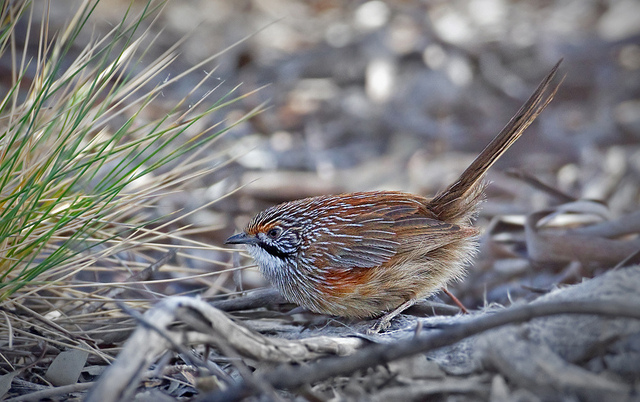
Striated Grass-wren photo: Colin Cock
October 14: Jake Mohlmann on his recently concluded tour of N. Arizona and S. Utah
Our trip on the Colorado Plateau took place during one of the wettest seasons this region has experienced in many years. Certain places such as the Grand Canyon and Cedar Breaks National Monument had blissful weather with endless vistas, while in contrast our visit to Bryce Canyon National Park was shrouded in a humid, misty cloud at over 9,000 feet. The inclement weather still allowed us to have an intimate experience with a wild California Condor while it perched high above the Colorado River.

California Condor (Thanks, Arizona Game and Fish)
During our Antelope Canyon tour the skies blackened and the rains pushed us quickly through.

Antelope Canyon before the rain
This rain also brought unexpected waterfalls to the parched Monument Valley, which is normally dry and dusty.

Monument Valley in tne rain
The Navajo Nation’s migrant traps were awash with scores of Western Tanagers, McGillivray’s Warblers, and a rare for Arizona Common Grackle. Canyon de Chelly’s ancient Anasazi ruins spoke of times past when long ago ancient Pueblo People inhabited the Colorado Plateau.

Canyon de Chelly
Some agreed our last three days in the White Mountains of Arizona were the highlight of the trip. Gray Jays and Townsend’s Warblers roamed the abundant coniferous forests that lined the wispy grassland meadows that harbored Eastern and Western Meadowlarks and countless American Kestrels.

Townsend's Warbler (Thanks Jon Feenstra)
The last day’s drive back is always exciting, and this year produced a stunning Painted Redstart, as well as extended looks at the normally reclusive Yellow-breasted Chat.
October 7: Rich Hoyer from his second Marvelous Mato Grosso Brazil tour
Leading almost exactly the same tour twice in succession was fascinating. In the tropics few birds have regular routines, so birding the same place two days in a row is interesting enough; repeating it two or three weeks later is like birding in a totally different area. This Marvelous Mato Grosso tour started in the Chapada dos Guimarães as did the first, but three weeks later and in the absence of a late and brutal cold front. As a result, nightjars were out in abundance, for example, and a drive down the entrance road resulted in our sighting as many at 15 Little Nightjars, a few Common Pauraque, and a Scissor-tailed Nightjar. The flowers by our rooms were buzzing with several species of hummingbird, including this White-vented Violetear.

As we departed the Chapada, we made a quick roadside stop hoping for who-knows-what and were treated to a thrilling encounter when two Bat Falcons began screaming and diving upon a soaring (Amazonian) White Hawk.

A short week in the Amazonian forests of Cristalino Jungle Lodge was a rich experience, yet utterly different than the last one. The fruiting tree by Tower II had been perfectly snapped off at mid-height by a storm the day after we arrived, but we were instead treated to this confiding Brown-banded Puffbird.

The boat rides on the Cristalino River were a relished treat, and here we had good views of both caiman species, here a Cuvier’s Dwarf Caiman.

The variety of birds and wildlife here was overwhelming at times, even if a challenge to see well. Then came our three full days in the Pantanal where we added a lifetime of sightings, abundant birds and animals, and all easy to see. Jabirus are a hallmark species of the region (nowhere else are they so common), and we saw all kinds of nesting activity, from nest with young and adults preparing for raising a new family.

And then of course was the utter highlight – the now almost routine boat ride on the Cuiabá River where Jaguar sightings have become an expected thing. Not every sighting is the same, and this time we were treated to an energetic young male (scuffed up from a recent fight it seemed) rolling around in the brush and spraying a tree, then moving on to stalk potential prey in the riverside grass.

September 19: Steve Rooke on his just-completed tour of South Africa
Maybe it is because I've led the South Africa tour so many times - this one was my 18th - that many of the most memorable moments from our tour seemed very familiar to me. Familiar…yes...but still and always (I hope) breathtaking: the hordes of Namaqua and Burchell's Sandgrouse dropping into a desert waterhole; a pride of Kalahari Lions lazing on the top of a red dune; the stark and beautiful landscape of Bushmanland with its myriad of larks (we logged 16 species); and the shy but majestic Ludwig's Bustards. Two real classics were the Namaqualand countryside washed with a mind-boggling palette of wild flowers and the thousands of Cape Gannets jostling for nesting space at the famous Lambert's Bay colony, and who can forget the coastal fynbos of the west coast complete with quartering Black Harriers, and the the vast open Karoo, also a mass of spring flowers, and home to some rare endemic birds. Finally, and of course, the Cape Peninsular presented a never ending array from Cape Rockjumper, a Cape Sugarbird atop a flowering Protea, a Cape Grassbird reeling out song from its fynbos home, the beautiful landscape and birds of Kirstenbosch Botanical Gardens, to an exceptional pelagic teeming with albatrosses, shearwaters, and petrels.
Images below WINGS South Africa archives.
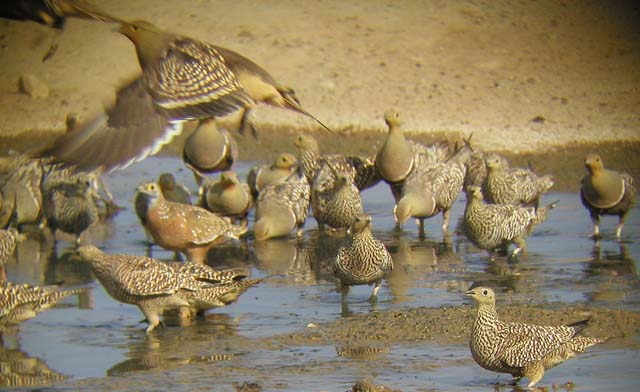
Namaqua (mostly) and Burchell's Sandgrouse
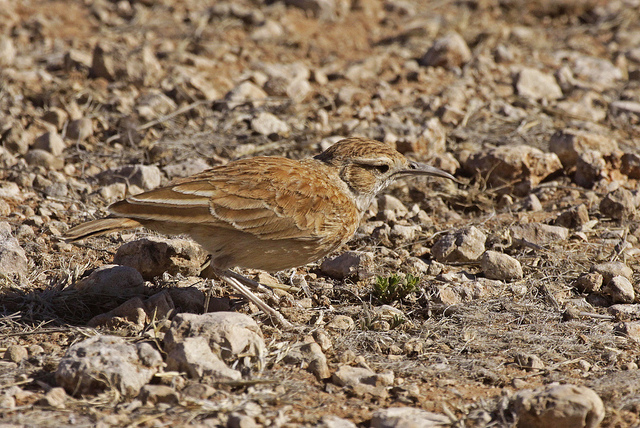
Spike-heeled Lar
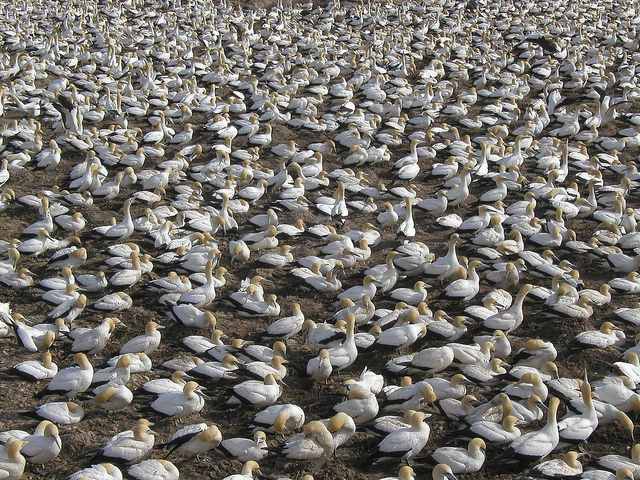
Cape gannets
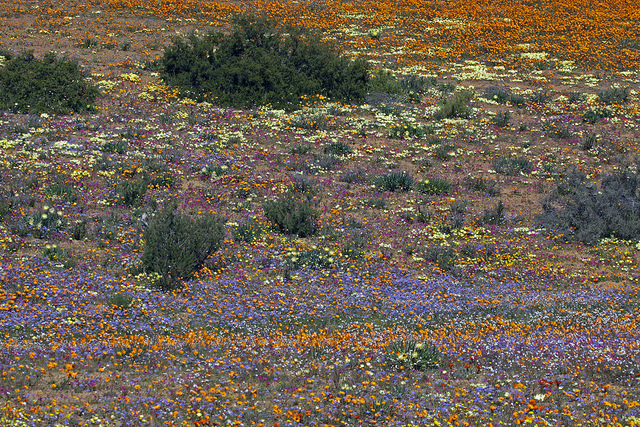
A Namaqualand wild flower display
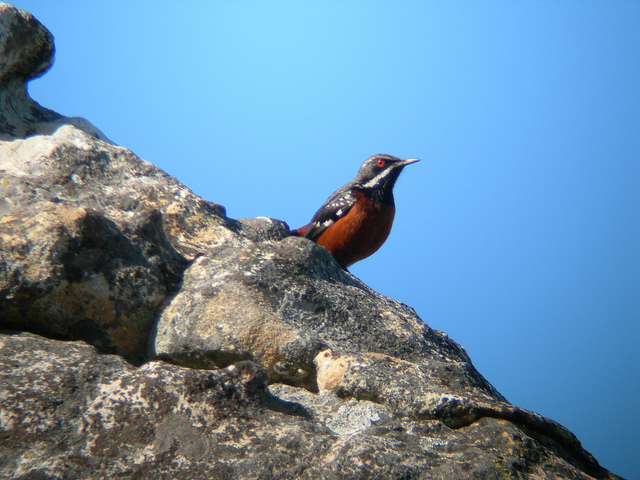
The endemic Cape Rockjumper
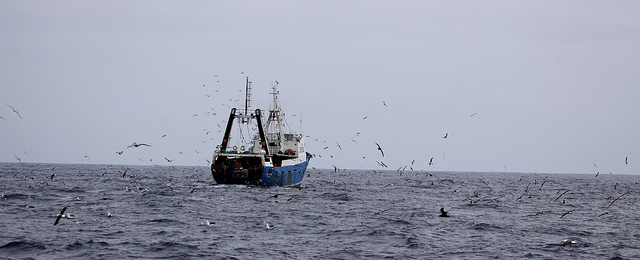
Seabirds swarming behind a trawler
